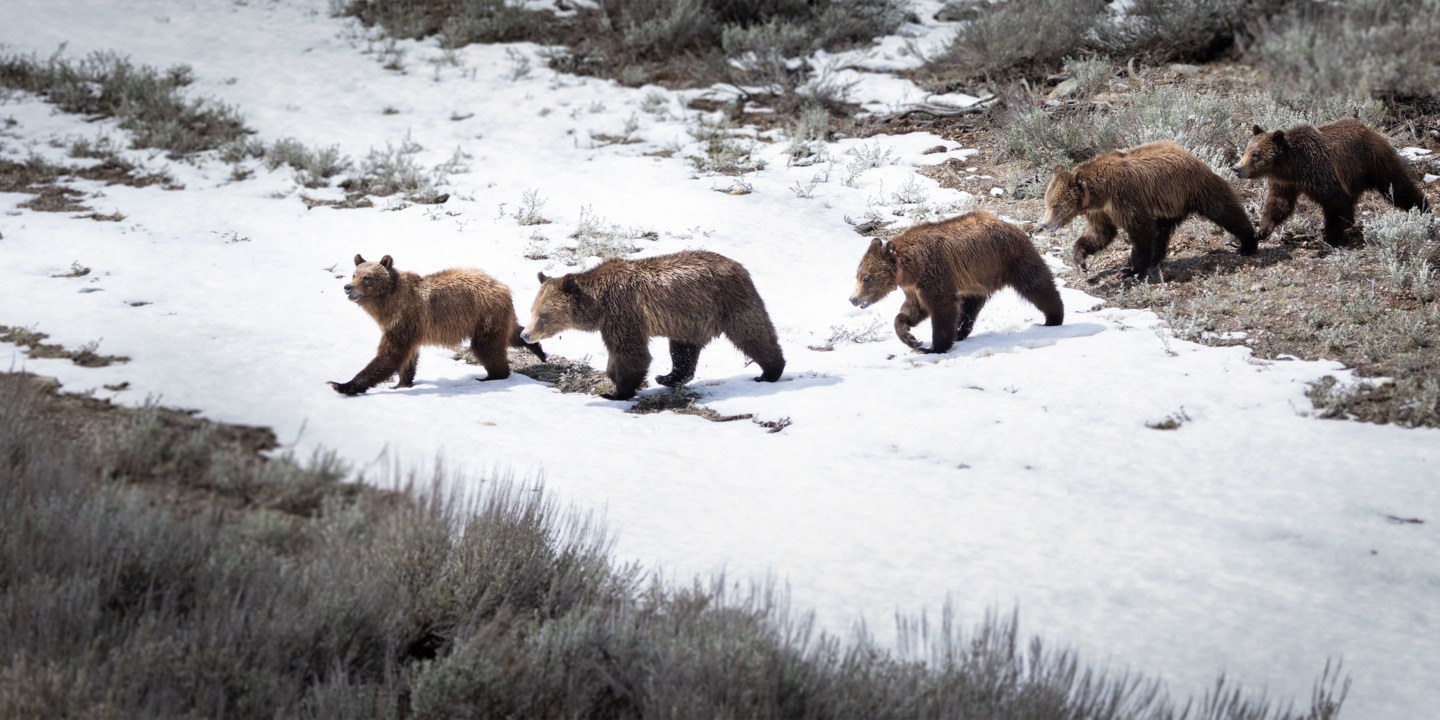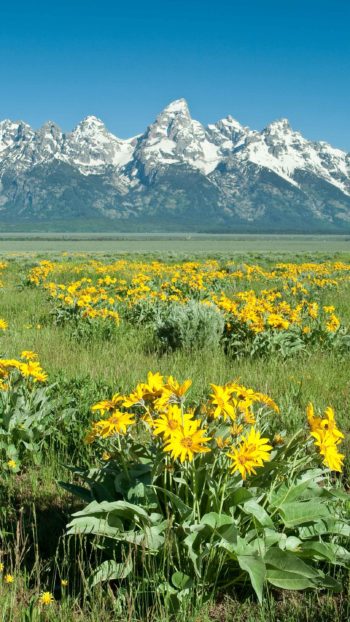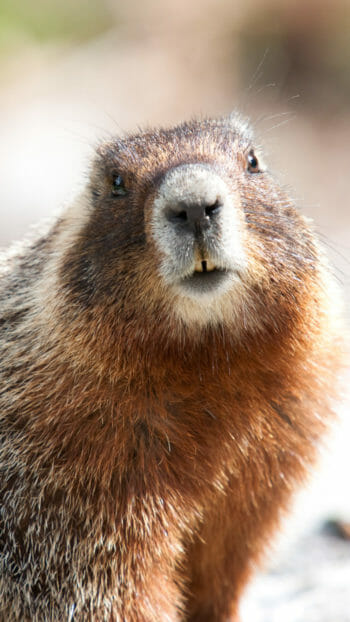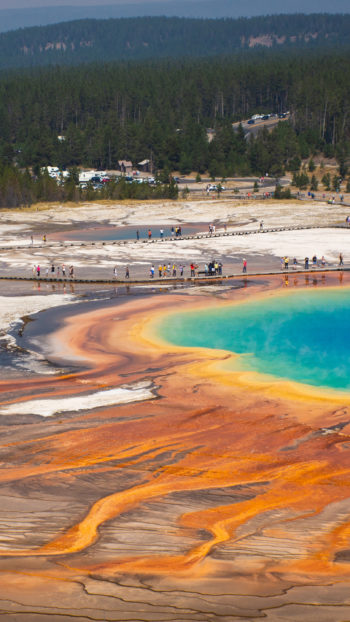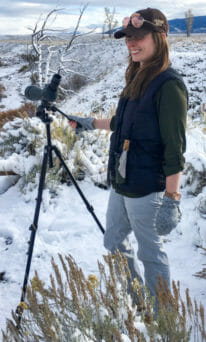Bears are some of the most sought after wildlife species for visitors exploring Grand Teton and Yellowstone National Parks, but they are only visible on the landscape for three out of the four seasons. During the winter months, they are hibernating underground, in a deep sleep until the weather warms again.
But how can an animal so large survive for so long without food and water? Hibernation is a fascinating process which helps many species get through winter when resources are scarce, but it requires certain preparation by the bear, and several biological functions in order to work.
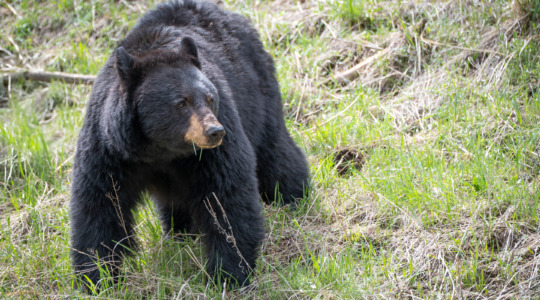

Bulking Up – Hyperphagia
As winter approaches, bears enter a phase called “hyperphagia”, which is essentially extreme hunger driving them into a feeding frenzy. The goal is to put on as much weight as possible to last throughout their hibernation. They will feed for up to 20 hours a day, searching for berries, roots, meat, insects, and sometimes human foods like crops, livestock feed, and unsecured garbage. People must be aware of this and secure food rewards to avoid the ravenous bears becoming habituated to their food. Bears are solely focused on feeding, often consuming up to 20,000 calories a day.
Bears can increase their body weight by 20%-50%, some even doubling it!
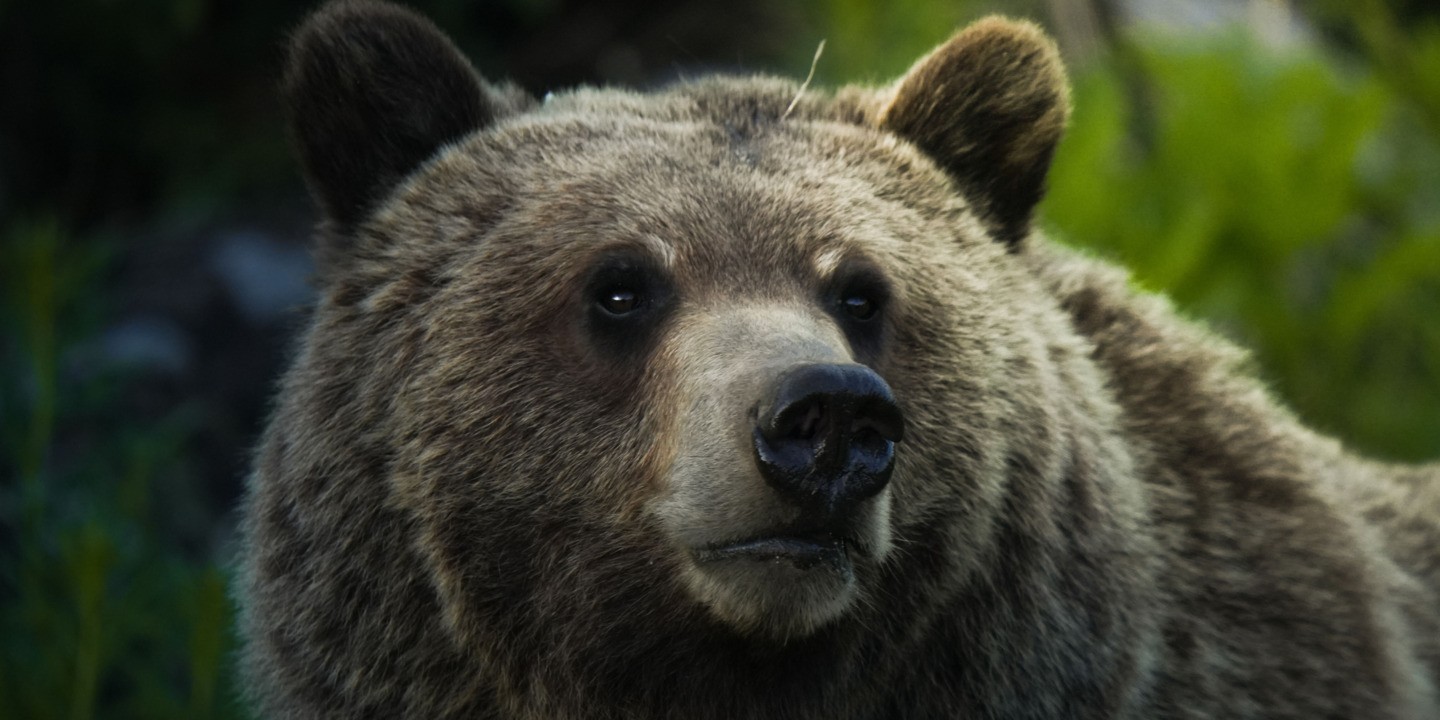
The Long Sleep – Hibernation
When the temperatures fall and snow begins to accumulate, limiting food resources, this is when bears will retire to their den and tuck in for the winter. They may have sourced their den in the summer, and have lined it with vegetation for warmth and insulation. They will den in rock crevices, hollowed trees, and dig into hillsides, excavating a small dwelling just big enough for them to fit. Once they are in their den, they typically won’t emerge until conditions have warmed once again. Snow covers the den and hides it from sight. You could walk right over one and never even know it!
One of the most unique and little-known aspects of hibernation is the creation of the fecal plug. Before a bear enters its den, indigestible materials from its diet, such as bits of hair, vegetation, and even shed intestinal lining, begin to accumulate and form a firm mass in the lower intestine. During hibernation, the bear’s digestive system slows to a near stop, and this plug prevents any waste from leaving the body. When the bear finally emerges in spring, it expels the fecal plug, signaling the end of its long dormancy and the start of a new feeding season.
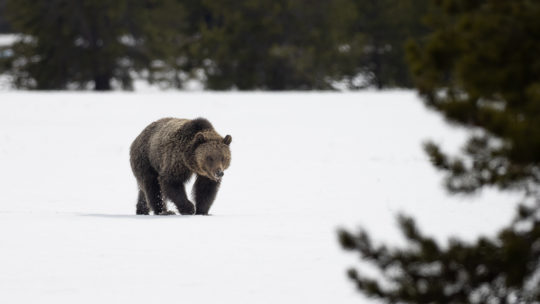
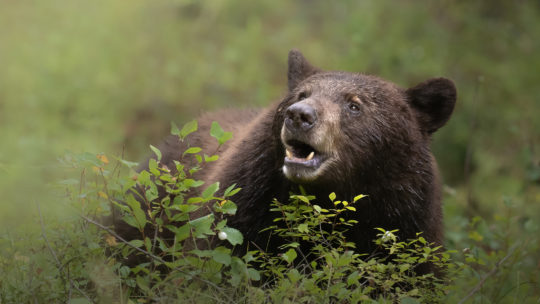
Surviving the Slumber
While bears may appear to be peacefully “asleep” all winter, their bodies are actually working hard behind the scenes to manage energy and conserve vital resources. During hibernation, a bear’s heart rate, metabolism, and body temperature drop dramatically. Their heart can slow from around 50 beats per minute to just 8, and their body temperature falls several degrees to help conserve energy. Unlike true hibernators, such as ground squirrels or bats, bears can actually wake up relatively easily if disturbed (though they usually don’t) as conserving energy is critical to survival.
Throughout the long winter months, bears rely entirely on the fat reserves they built during hyperphagia. Their bodies are incredibly efficient at recycling nutrients: muscle and organ tissues are largely preserved, even though the bears are not eating or drinking for months. They do not urinate or defecate during this time, instead recycling waste products internally in ways that still baffle scientists. Urea, a toxic byproduct of protein metabolism, is broken down and reused to maintain muscle tissue, one reason bears don’t waste away while fasting for so long.
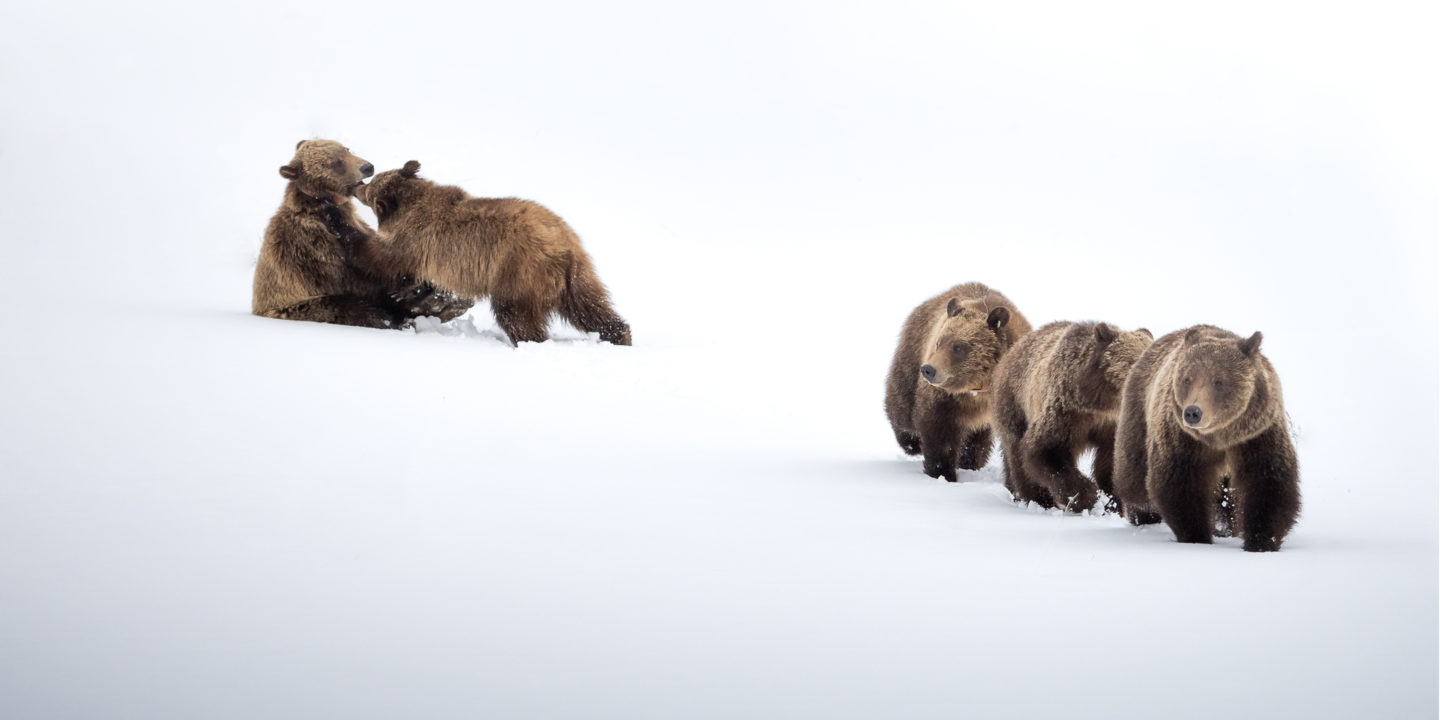
New Life in the Den
For female bears, the den serves another incredible purpose: it becomes a nursery. Pregnant females give birth while still in hibernation, usually between January and February, when the world outside is still locked in snow. The tiny cubs, often weighing less than a pound, are born blind and nearly hairless. The mother remains in a semi-dormant state, conserving energy but waking occasionally to nurse and care for her young. Thanks to her insulating fat and the warmth of the den, the cubs are kept safe and snug through the harshest months. By the time spring arrives, they’ve grown considerably and are ready to follow their mother out into the new season.
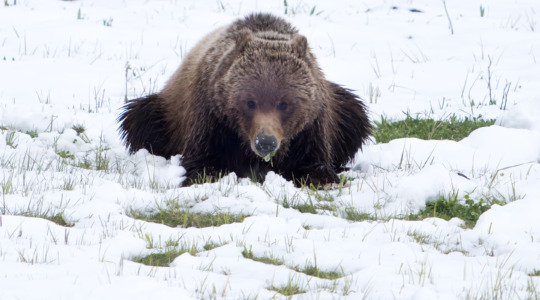
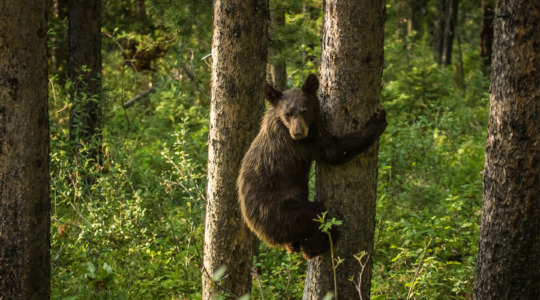
Delayed Implantation: Nature’s Timing Mechanism
One of the most remarkable reproductive strategies in the animal kingdom helps make this winter birth possible: a process known as delayed implantation. When a female mates in late spring or early summer, the fertilized egg does not immediately implant in her uterine wall. Instead, it remains dormant for several months. Only if the female has gained enough fat reserves during the summer and fall will the embryo implant and begin developing in the fall.
This clever adaptation allows bears to focus wholly on feeding throughout hyperphagia without taking the time that mating season would demand in the fall. It also ensures that a bear will only give birth when her body has the energy stores to support both herself and her cubs through the long winter. If she hasn’t accumulated enough fat, implantation won’t occur, and she doesn’t have a pregnancy. In this way, delayed implantation synchronizes reproduction with the bear’s overall health and the environmental conditions.

Emerging into Spring
When the first warm days of spring melt the snow and awaken the forests, bears finally emerge, leaner but alive, and ready to begin the cycle again. Mothers guide their curious cubs through their first foraging lessons, teaching them to find food, avoid danger, and prepare for the seasons ahead. For wildlife enthusiasts visiting Grand Teton and Yellowstone, spring and summer bring a rare opportunity to witness these remarkable creatures as they rejoin the landscape as living proof of nature’s resilience and the quiet marvels of winter survival.
FAQs
Do bears really sleep the entire winter?
Not exactly! While bears enter a state of deep hibernation, they aren’t completely unconscious. Their body temperature, heart rate, and metabolism drop dramatically, but they can still wake if disturbed or if conditions change. Mothers also wake periodically to nurse their cubs during the winter months.
How long do bears hibernate?
The length of hibernation depends on the species, location, and severity of the winter. In the Greater Yellowstone Ecosystem, bears typically den from late November through March or April, though males and non-pregnant females may emerge a bit earlier than mothers with cubs.
Where do bears make their dens?
Bears often dig dens on north-facing slopes where snow accumulates for insulation. They may use natural rock cavities, hollow trees, or dig into hillsides. Each den is carefully lined with grasses, leaves, or pine needles for warmth and comfort.
What happens to a bear’s body during hibernation?
During hibernation, a bear’s body runs almost entirely on stored fat. Their heart rate slows to as low as eight beats per minute, and their breathing becomes shallow and infrequent. They don’t eat, drink, urinate, or defecate the entire time. Their bodies recycle waste products to preserve muscle and organ health.
When is the best time to see bears in Grand Teton and Yellowstone?
The best bear-viewing opportunities are from late spring through early fall, when bears are active on the landscape. In spring, look for them near valley floors searching for roots or carrion, while late summer and fall often find them feeding on berries in higher elevations before hibernation begins.

